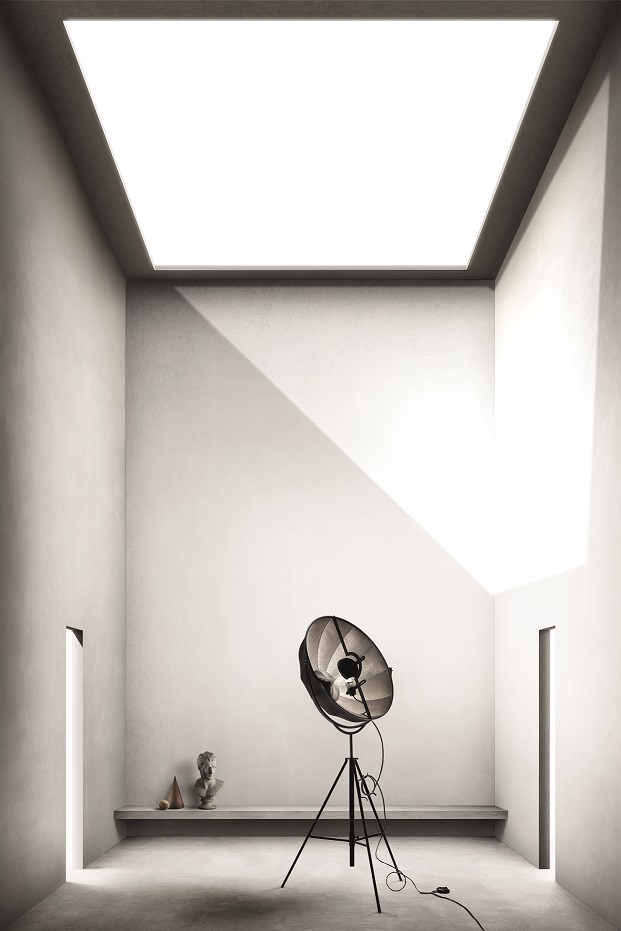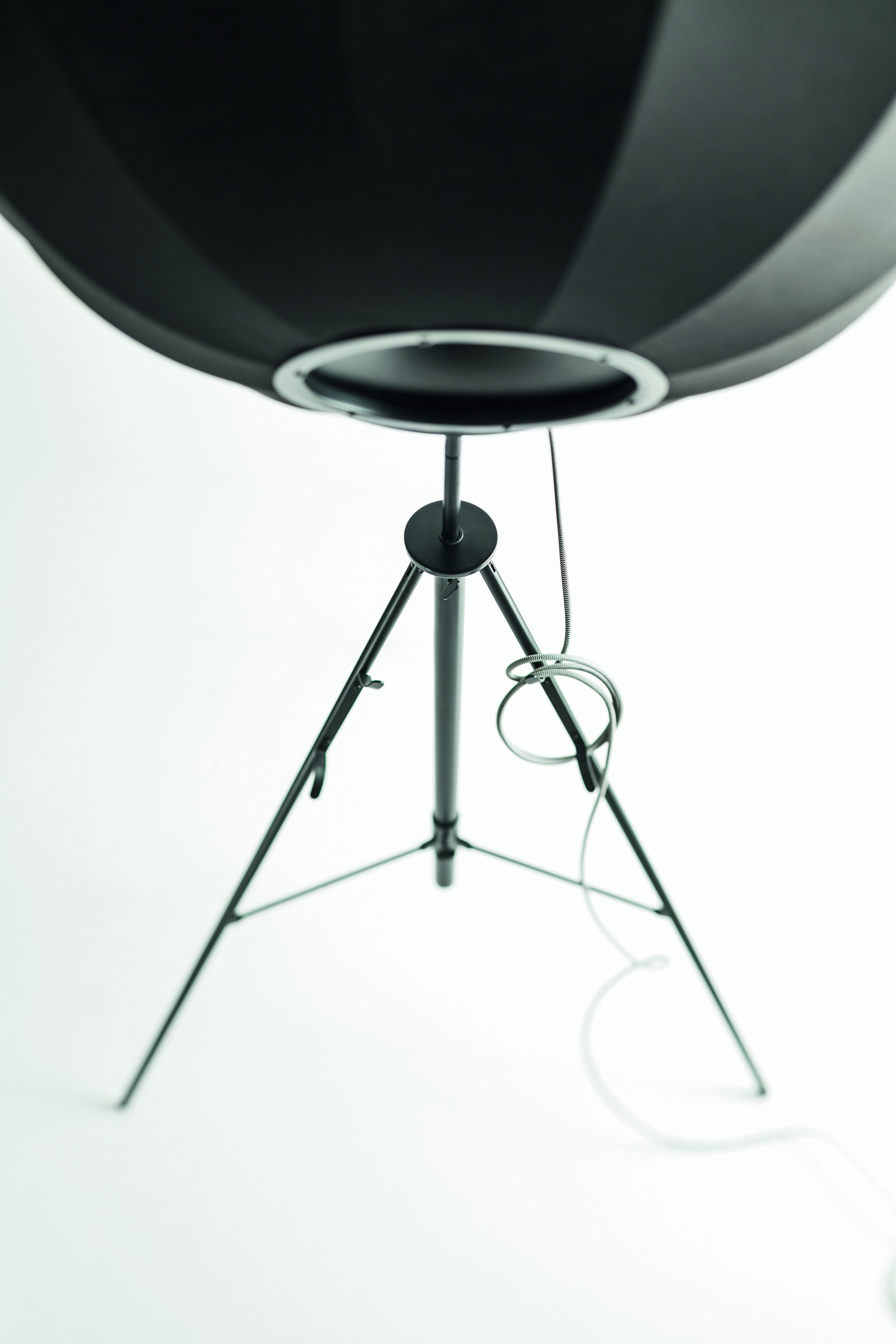Each form of art has its limits. Painting, for example, is silent, still and anchored to the support. The works, however, with skilful tricks, try to make themselves complete. The landscape tries to give itself volume, the figures try to move.
Tintoretto's paintings from the Scuola Grande di San Rocco in Venice are a masterful example of this. The canvases try to deal with stillness, the subjects try to escape from the frame through large plastic gestures, exploiting the narrative tension.
In 1937 the "dark" works of the Scuola Grande di San Rocco saw the (electric) light for the first time. The arduous task of illuminating such a beautiful and dark place was commissioned to Mariano Fortuny. Fortuny's lamps, with their diffused light, still create a suspended atmosphere that holds them back and relegates them to the specificity of the medium, without flattening them, without overwhelming them, enhancing their shape.
But the path of creation that led Fortuny to create such a functional and beautiful lamp does not come from a mere proof of concept.
Spanish and born into a family of artist, in 1889, when he was just eighteen, he moved to Venice and settled in Palazzo Pesaro-Orfei, now a famous museum dedicated to him. Fortuny was a painter, engraver, photographer, prop designer, lighting technician, draftsman, decorator and creator of fabrics; in each of these fields he was able to provide knowledge and leave a precious legacy. In 1919 he founded his Fabric Factory in Giudecca Island, still active today, where he could control and carry out his production personally. The attention to the design and care for the product’s essence have allowed the Fortuny language to express itself in the forms and connect with the contemporary.
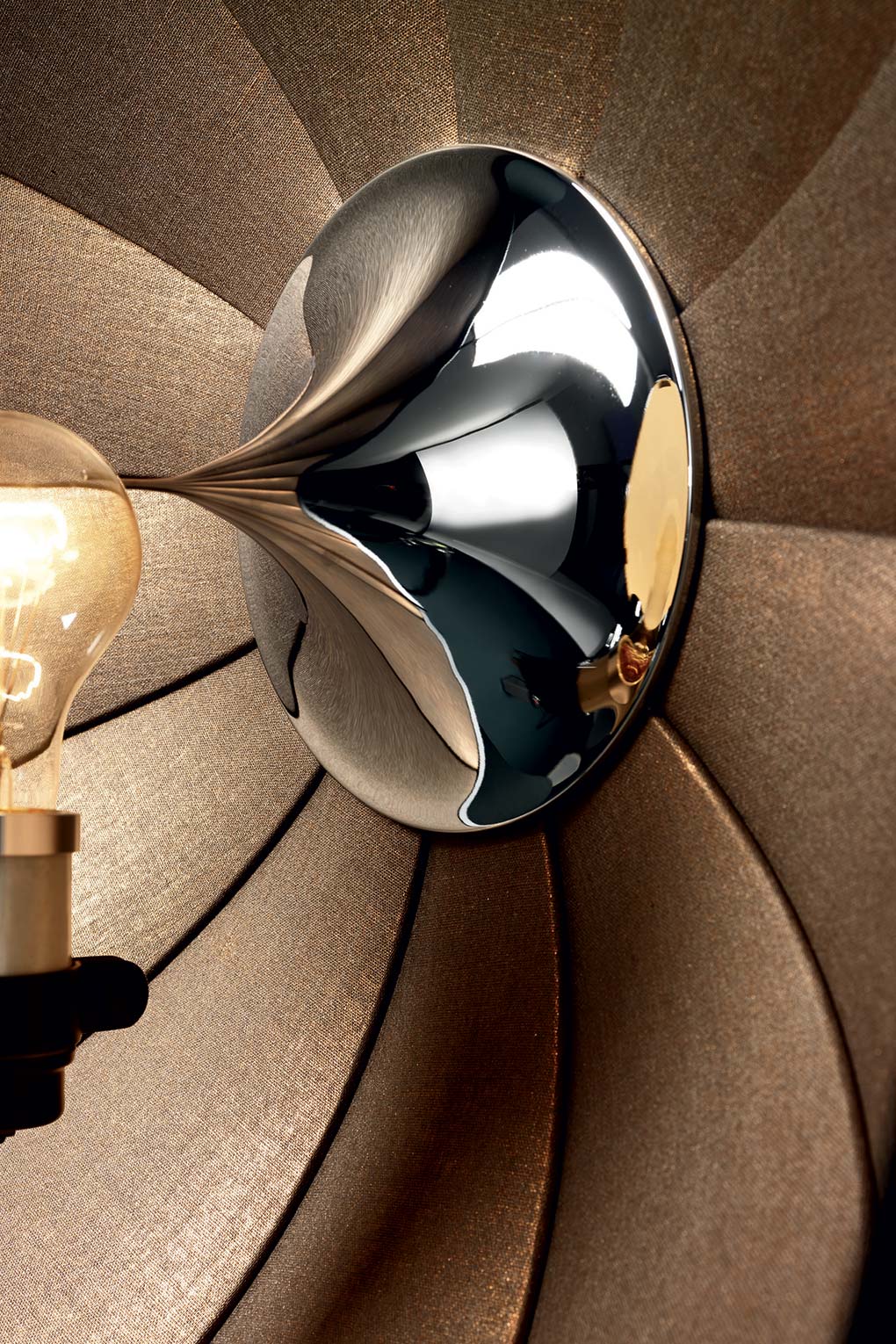
Ph. Alessandro Bon
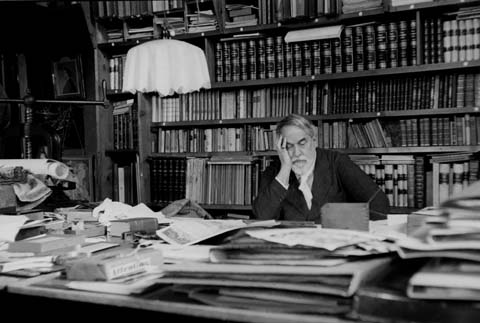
Ph. Fondazione Musei Civici di Venezia - Museo Fortuny

Ph. Fondazione Musei Civici di Venezia - Museo Fortuny
Like all noteworthy designs, the Studio 1907 lamp owes its genesis to the need to change society’s habits. The goal was to exploit the infinite possibilities of electric lighting, discovered in those years, to light up the theater scenes in a completely new way.
Fortuny understood that what is fundamental is not the quantity, but the quality of the light. Diffusing the light, refracting it on a surface capable of radiating the room, improves the visual rendering and allows the pupil to open correctly. This lighting method allowed the light to be focused, producing a harmonious overall effect between the scenographic elements.
Fortuny's lighting experiments are made effective by the simplicity of his intuitions, which are poured into the Studio 1907 lamp, consisting of an aluminum lampshade and a steel support that can be tilted 360 °, specially made to direct the light, and a tripod like that of cameras, with an adjustable central axis.
The attention to the natural shape of things, the precious gift of craftsmanship and the ability to renew and reform the world – but always making it look natural – have created a product that we can still consider modern. This is because, as a Japanese common saying, "beauty is a consequence of right".

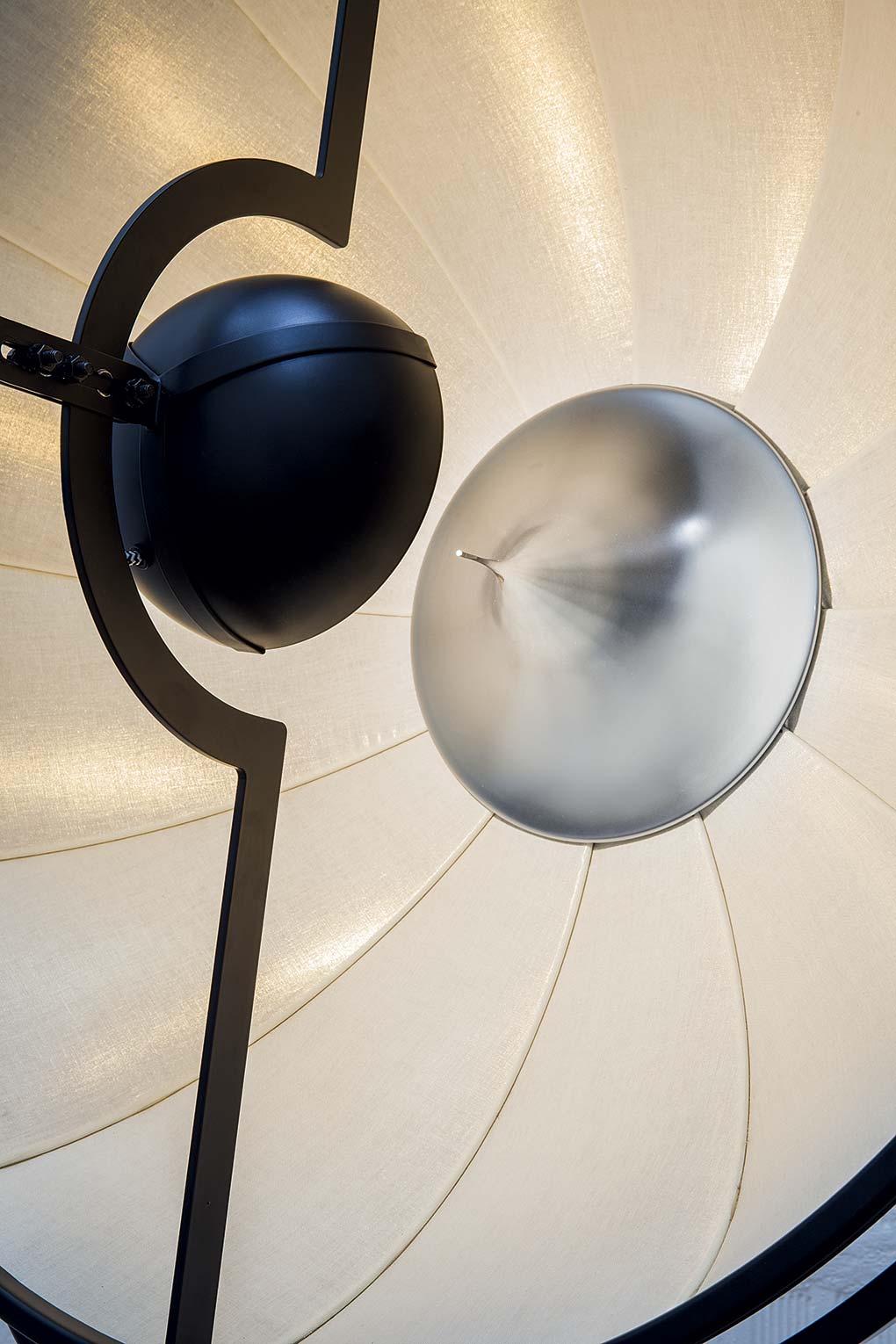

Ph. Alessandro Paderni - Studio Eye
The interest in whole art, the genuine curiosity for what surrounds us, the scientific process and aesthetic intuitions that come together: all this describe the character of the “all-round designer” as we conceive him today.
Fortuny is certainly one of the pioneers of the way of looking at design as the art of thinking across various disciplines.
There are works whose destiny is to acquire ever new meanings, to renew themselves while maintaining their own identity, without their content dissolving.
There are objects that, in the chaos of the world, know how to find their still space, witnessing beauty. When an object manages to find its place in everyday life again and again, more than a hundred years after its conception, it can only be the product of a creative genius who was able to interpret and embody the role of the designer in all its facets.
Fortuny Silver Rubelli, Black and Moda.
Ph. Riccardo Munarin - Photografica
Not surprisingly, the lamp designed by Mariano Fortuny is still produced with small technical differences by Fortuny - Venetia Studium and Pallucco, which describes it as "a contemporary and timeless icon". Over the years, the two well-known companies have created various versions capable of providing ever new interpretations of an object that remains unmistakable and unique.
Considering that the lamp market changes with the same speed, or almost as fast as the fashion world, we notice how the Fortuny lamp is a masterful example of successful innovation. The perfect shape for its perfect function.

